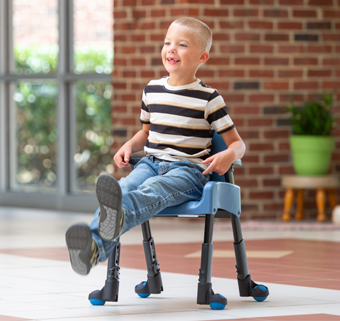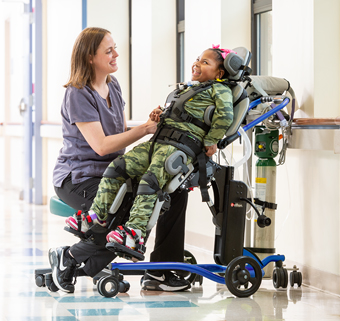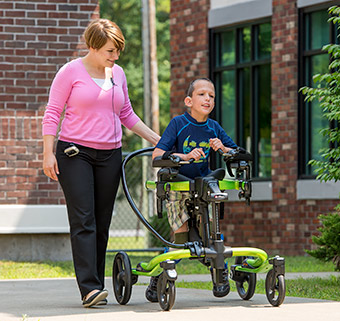Exploring the Use of an iPad to Enhance Productivity
| November 2012 The iPad is a tool that has revolutionized how we access and use media in our lives. As a physical therapist, I have been using one for work for the last several years and have found it enormously helpful. Of course, there is a learning curve for anything and it was a little daunting to figure out how to make the iPad meet my needs. When I first got my iPad I sat down with a friend who got me started; now whenever I have a question I just ask my kids!
The iPad is a tool that has revolutionized how we access and use media in our lives. As a physical therapist, I have been using one for work for the last several years and have found it enormously helpful. Of course, there is a learning curve for anything and it was a little daunting to figure out how to make the iPad meet my needs. When I first got my iPad I sat down with a friend who got me started; now whenever I have a question I just ask my kids!
I mostly use free apps, because I am cheap. But for those I buy I use Appminer which lets you know when apps go on sale, which is OFTEN.
I have found that useful ways to use my iPad fall into three categories: apps that make me more productive, apps that can be used for documentation and apps that help me with therapy.
Productivity:
- iPad syncs contacts, calendars and email accounts. I sync my gmail and exchange accounts on my iPad so I can read all of my accounts at once. I have to be careful when sending emails though, and make sure that the correct “from” email account is specified. (I have made the mistake of sending work emails from my home account.)
- Dropbox and PDF Expert are two apps I cannot live without. I use Dropbox to sync documents between my iPad, laptop and my phone. Dropbox uses the Cloud, so the first time you open the document on your iPad you need to have internet access. After that the document is stored on your iPad and you will have access to it. PDF expert can be used to edit, revise and store PDF documents. You just save the document as a PDF on your laptop, and then you can access it on your iPad.
- Cloudon syncs with Dropbox and allows you to access documents and use Microsoft programs likee Word, Powerpoint and Excel. You can edit your Dropbox documents and sync them as well.
Documentation:
- First a word of caution: Before using the iPad (and the Cloud), check your facility’s privacy policies to make sure you stay FERPA and HIPAA compliant. In my facility we are not allowed to use the Cloud for student information, so any patient-specific data there must be redacted or removed in some way.
- If your facility uses a documentation program you access via the internet, the iPad can be used to enter information directly.
- The Reminders and Notes app that comes with the iPad automatically syncs with other devices. I store information on my notes app such as where a school is located, who the contact people are, and scheduling information. I also document meeting information or therapy treatment notes here so I can follow up later. Evernote also works well for this purpose. If you want daily reminders I find Popnotes is an excellent app for this.
- Using my iPad for photos and videos is by far its most powerful feature. You can email photos, download video to Youtube and use this for documentation or for sharing with a parent. I have sent videos or photos of students using a gait trainer for the first time or sent clips to my teaching staff to demonstrate how to use Rifton's lifting and transfer devices. (Always ask parents before downloading video to Youtube because of confidentiality issues. Some parents do not mind the video being public, others want some privacy settings so that they can share the video link only with family members.)
- I save test tools as PDFs (using my laptop) in Dropbox, use the iPad to collect the data and then email the tool to myself where I can save it on the server. It can be stored as a PDF on the iPad as well. This works well with the Gross Motor Function Measure and other PDF assessment forms.
- PAR Assessment toolkit is a great app for deriving norms from standardized testing, comparing scores to a normal curve, correcting for age on a conversion chart, timing on a stopwatch, and calculating compliancy.
Therapy:
- iGonio is an app where you can take photos from your iPad and draw lines and angles on them. This is great for documenting posture with a plumb line, demonstrate lumbar lordosis in a stander, or any other situation where you want to measure or draw attention to body position.
- I use the Giant Timer app because the interface is simple and engaging for kids. We play “Beat the Clock” where I have the kids practice various standing balance tasks for time, trying to beat their last time. This is engaging for the kids, but also makes them focus visually which improves balance. I have timed kids as they complete an obstacle course walking in gait trainers or pushing their wheelchairs. The kids can see the Giant Timer from a distance so it reinforces what they are doing.
- In addition, if you are using timing tasks with your kids there are several great metronome apps that I find very helpful.
- Pinterest is a great source of therapy ideas. The Pediatric Special Interest Group of Virginia is working on a Pinterest site to share therapy ideas. Check us out at VPTA PSIG!
- AutismApps is a parent-screened list of apps in a variety of areas to support children with autism.
- Video Coach: Ubersense records a person doing an activity, calculates joint angles, allows playback frame by frame, and allows you to record and share the video. This is great to enhance the motor learning aspects of teaching a skill, allowing the child to see themselves doing the activity, identify what could be improved and then reteaching. The app will also capture time to perform the activity as well.
- Lift is an app that allows you to set goals for yourself and then check every day whether you achieved that goal. It is based on the idea that it takes 30 days of consistent practice on a goal to change your long term behavior. People set goals for personal health, fitness and diet. If you are a therapist working with middle and high school students on self advocacy or areas where you are trying to empower them this app can be used to support them.
Please leave comments here about how you are using your iPad or other technology. One of the best ways to improve how we use our tools is by sharing with each other!
Connie Johnson is a physical therapist and works for Fairfax County (VA) Public Schools.




